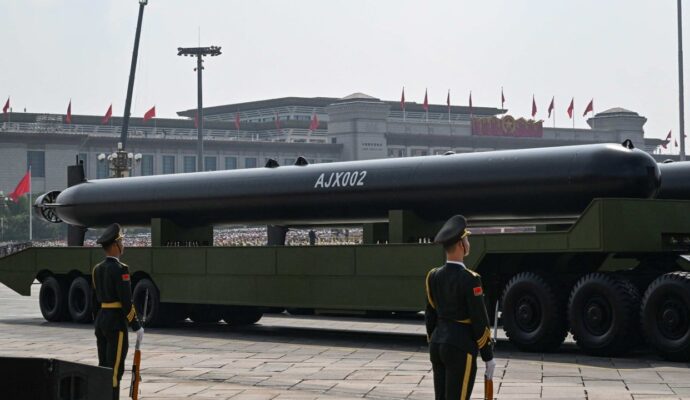The yin-yang symbol represents opposite but connected forces and is known in China as “taijitu”, a concept that dates back to the Song dynasty (960–1279).
“It’s not the first image of quantum entanglement but this is eye-attracting research,” said Yin Zhangqi, a professor at the Beijing Institute of Technology’s school of physics.
He said the taijitu pattern in this paper could not be “taken for granted”, saying the resulting image could have something to do with the light beam used by the researchers.
Yin said that taijitu had appeared in the quantum world before. In a paper published in a top physical academic journal in May, a group of Chinese scientists generated a figure that was quite similar to the yin-yang shape, using a different method, he said.
Quantum entanglement underpins the strange science of quantum mechanics and has huge practical implications for areas such as computing.
Researchers have harnessed its power for quantum cryptography, technology that uses the laws of physics to prevent eavesdropping. It also has the potential to advance other quantum technologies such as quantum imaging.
Quantum entanglement occurs when two particles become inextricably linked, and whatever happens to one immediately affects the other, regardless of how far apart they are.
It has been likened to a pair of shoes – the moment one shoe is identified, the nature of the other, whether it is the left or right shoe, is immediately known.
In quantum mechanics, knowing a particle’s wave function opens the door to understanding the particle’s quantum state.
Just like the shoe’s “wave function” carries information like size, colour, left or right; similarly, in quantum physics, the wave function enables scientists to predict the probable outcomes of various properties of a quantum entity, such as position and velocity.
But pinning down the function of a quantum system, a process called quantum tomography, is challenging and only increases in difficulty as the system becomes more complex.
Previous experiments conducted with the standard approach measuring the “high-dimensional” quantum state of two entangled photons could take hours or even days.
In this latest study, the researchers developed a quantum tomography technique called biphoton digital holography. They superimposed the entangled photons with a known quantum state, and then analysed the spatial distribution of the positions where two photons arrive simultaneously to capture a “coincidence image”.
“This study made a great contribution to quantum state tomography,” said Wang Jindong, a professor at South China Normal University in Guangdong province.
Wang said that knowing the characteristics of the wave function was essential to apply quantum physics.
The mainstream method, however, was time-consuming and not very scalable, but this team was delivering a new approach that might go some way to overcoming these limitations, he said.

